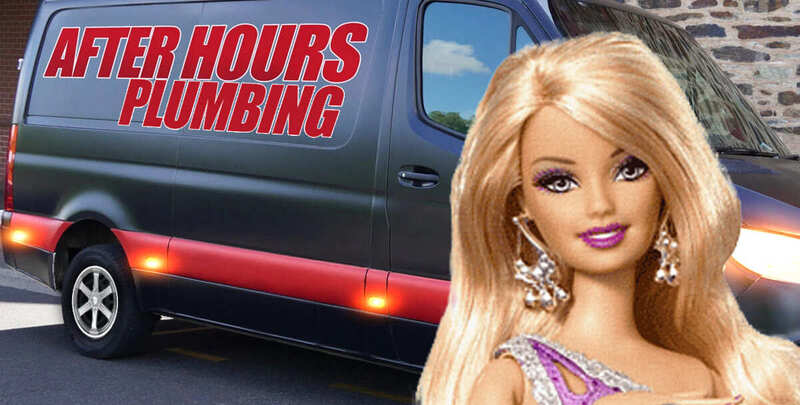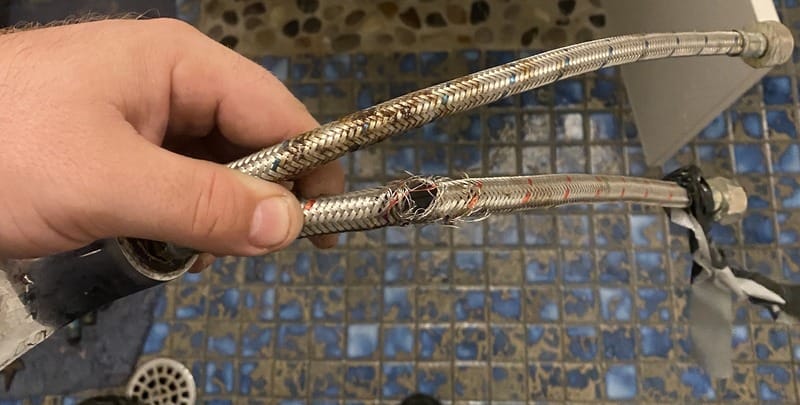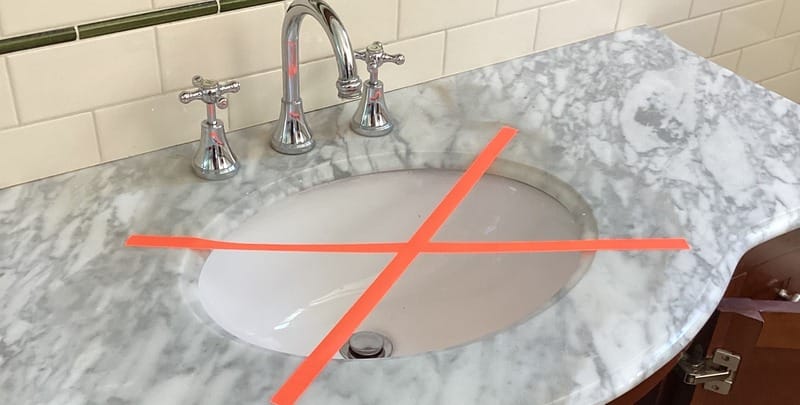5 Smart Tips to Avoid Plumbing Disasters

In your home's plumbing system, a myriad of issues can lurk − from clogs to the dreaded burst pipe − each carrying the potential to escalate into a full-blown plumbing disaster.
As a homeowner, understanding the complexities of your water supply, drainage and sewage systems is crucial to maintaining the top shape of your building’s infrastructure.
Plumbing emergencies, like leaking pipes in the kitchen sink or a blockage in the bathroom shower, demand immediate attention to prevent water damage that could compromise your floor, walls, and overall house integrity.
Engaging with professional plumber services becomes indispensable in addressing these urgent plumbing problems effectively.
However, preventative measures are equally vital. Knowledge about your plumbing’s main water supply, hot water systems, and flexible hoses can empower you to take swift action, mitigating the risks of an emergency repair and the subsequent damage caused.
In this article, we will share valuable tips and insights into maintaining your plumbing system, helping you to avoid the inconvenience and cost of plumbing disasters.
Whether it’s a slow drain snake moving through your pipes or a sudden power outage affecting your pump, being prepared can save you from the excess water, dirty water, and potential problems that threaten the comfort of your home.
1. Regular Maintenance is the Key
Regular maintenance of your plumbing system is the linchpin in preventing plumbing disasters, saving money, and preserving the integrity of your building.
Regular check-ups by expert plumbing services can identify and rectify common issues like leaks, clogged drains, and weakened pipes before they burst, leading to severe water damage to floors and walls.
Clogged drains, often caused by accumulations of hair, paper towels, and other materials, are a precursor to plumbing emergencies.
Regularly clearing drains in sinks, showers and toilets prevents the build-up of waste that can lead to significant blockages. In the kitchen, ensuring your garbage disposal is free from food waste and not overloaded can prevent a clogged drain and keep your kitchen sinks running smoothly.
The risks of burst pipes increase during freezing temperatures due to the expansion of frozen water inside the pipes. Inspecting pipes for insulation and maintaining a steady heat supply minimises this risk.
Similarly, monitoring water pressure is essential; too much pressure can strain piping and lead to leaks or a burst pipe. Installing pressure-regulating valves can maintain optimal pressure throughout your house.
Hot water systems also demand attention. Regular servicing of your hot water heater ensures it operates efficiently, reducing the chance of unexpected breakdowns. Checking the anode rod and sediment build up in the tank can extend the lifespan of your heater and maintain a consistent hot water supply.
Engage with a professional plumber to conduct these necessary fixes and installations. They can assess the condition of your piping, recommend the best solution for any issue, and replace outdated components like valves, pumps, and plastic pipes. This proactive approach not only keeps your plumbing in top condition but also avoids the extensive costs associated with plumbing disasters.
Regular maintenance is an essential strategy to prevent plumbing issues. By addressing potential problems in your drains, pipes, and hot water system, you can avert the emergencies that lead to significant damage and expense.
Scheduled checks and timely fixes ensure that every point of your plumbing system, from the bathroom faucet to the sewer line, functions reliably, safeguarding your home against the unpredictability of plumbing disasters.

2. Know Your Pipes: Preventing a Burst Pipe
Understanding the types of pipes in your home is critical to prevent plumbing disasters, especially the dreaded burst pipe scenario. Different materials are used for plumbing, each with its own lifespan and susceptibility to problems.
For instance, older homes might have galvanised pipes prone to corrosion, while newer structures often use durable PVC or copper piping.
A burst pipe can cause significant damage to your flooring, walls, and even the structural integrity of your building. This is why knowing the signs of wear and potential leaks in your plumbing is paramount.
Regular inspections can reveal if a pipe is under strain from high-pressure water, blocked by accumulated faecal matter in the sewer lines, or corroded due to chemical reactions with the water supply. To prevent such plumbing problems, consider the age of your piping and their exposure to potential risks like freezing temperatures or physical damage.
Plumbers play a vital role in maintaining the health of your plumbing. They can assess the condition of your piping, recommend when to repair or replace them, and perform essential installations that meet your plumbing needs. For example, installing a backwater valve can prevent sewage from backing up into your home during heavy rains, avoiding a disastrous and costly mess.
In areas like the bathroom or kitchen, where pipes are often hidden behind walls or under floors, a leak detection system can be a wise investment. These systems can alert you to a leak before it becomes a major issue, saving you money and the hassle of extensive repairs.
Being knowledgeable about your plumbing and taking proactive steps like regular inspections, appropriate installations, and timely replacements can significantly reduce the likelihood of a burst pipe, safeguarding your home from potential plumbing disasters.
3. Address Slow Drainage Quickly
Slow drainage in your home, whether in the sink, toilet or shower, is often a precursor to more severe plumbing disasters. Ignoring this issue can lead to complete blockages, leaks within your walls or under the floor, and even structural damage to your property. Therefore, addressing poor drainage promptly is crucial in preventing these potential disasters.
The cause of drainage being slow can vary from accumulated hair and soap scum in shower drains to food waste in kitchen sinks or even foreign objects obstructing the toilet. The first step in addressing this problem is to identify the cause.
Often, a simple plunger can clear minor blockages, restoring normal flow. However, for more stubborn clogs, a plumber’s snake or drain auger might be necessary to remove the obstruction.
Regular maintenance is key to preventing slower drainage. Homeowners should be cautious of what goes down the drain. Installing drain guards can catch hair and other debris, preventing them from entering the piping. Additionally, routine cleaning with natural solutions like baking soda and vinegar can keep drains clear without damaging the plumbing.
However, if these measures fail to resolve the issue, it may indicate a more significant problem, such as a leak or a failing pump, especially if the drainage is accompanied by gurgling sounds or water backing up. In such cases, professional assessment by a licensed plumber is essential.
They can conduct a thorough inspection to identify the root cause, whether it’s a blockage deep within the plumbing, a compromised sewer line, or a problem with the power supply to a sump pump.
The plumber might recommend a more extensive repair or installation, such as replacing a section of pipe or installing a new pump. These interventions can prevent a slowing of the drainage from escalating into a full-scale plumbing disaster, safeguarding your home’s structural integrity and avoiding costly fixes.
By taking immediate action and seeking professional help when necessary, homeowners can prevent the inconvenience and expense of larger plumbing disasters.

4. Install a Pressure Limiting Valve
Installing a pressure limiting valve (PLV) is a strategic measure to safeguard your plumbing system from the havoc high pressure water can wreak on pipes, toilets, sinks, and drains.
Excessive pressure in your plumbing can lead to burst piping, dripping faucets, running toilets, and other costly damages. A PLV, installed by a professional plumber, can regulate and maintain water pressure at a safe level, protecting the integrity of your infrastructure.
The importance of a PLV becomes evident in its ability to prevent the stress and strain on pipes that often lead to leaks and bursts. These incidents can cause significant damage to walls, flooring, and fixtures, not to mention the potential for water wastage and increased utility bills. By controlling the pressure, a PLV extends the lifespan of your piping and ensures that all components, from the main water door to the smallest faucet, operate efficiently.
Installing a PLV is not a DIY task; it requires the expertise of a qualified plumber. They can assess your plumbing system’s needs, recommend the appropriate valve, and install it at a key point in your system, usually where the main water line enters the house. This placement ensures that the pressure is controlled before it flows through your home’s pipes, reaching your toilets, sinks, and drains.
Moreover, a plumber can evaluate other aspects of your plumbing system, such as the condition of your piping and the functionality of valves and pumps.
They can identify any potential issues that may contribute to pressure problems and suggest necessary fixes or upgrades. This comprehensive approach not only prevents immediate plumbing disasters but also contributes to the long-term health of your plumbing.
Installing a pressure limiting valve is a proactive step towards protecting your home from the adverse effects of high pressured water. With the help of a professional plumber, you can ensure that your plumbing system is equipped to handle the demands of daily use, minimising the risks of damage and ensuring the longevity of your plumbing infrastructure.
5. Educate Yourself on Plumbing Basics
Installing a pressure limiting valve (PLV) is an essential step in protecting your home’s plumbing system from the damaging effects of high water pressure. Excessive pressure can stress pipes and fixtures, leading to leaks or bursts that can cause significant damage to walls, floors, and other parts of your home.
The installation of a PLV is a technical task that should be undertaken by a professional plumber. They can assess the existing pressure in your home and determine the optimal setting for the valve to ensure your piping operates efficiently. By installing a PLV, you prevent the risk of pressure spikes that can lead to plumbing disasters.
A properly installed PLV not only protects the integrity of your piping and fixtures but also contributes to the overall longevity of your plumbing. It ensures that everything from the main water line to the smallest tap in your house receives a steady and controlled flow of water, reducing wear and tear on the system.
A PLV is a vital component in the plumbing infrastructure of any home. Its role in regulating the pressure of water cannot be overstated, as it directly impacts the health of your plumbing network, from the toilet to the kitchen sink and beyond.
Ensuring its proper installation and functionality is crucial in preventing costly fixes and maintaining the structural integrity of your home’s plumbing.
Securing Your Home’s Plumbing Future
Proactively addressing your home’s plumbing needs through regular maintenance, understanding your pipes, swiftly dealing with slow drains, and installing a pressure limiting valve can significantly reduce the risk of plumbing disasters.
Each of these steps is crucial in maintaining the health of your plumbing system, preventing costly repairs, and ensuring your home’s structural integrity.
By following these valuable tips and seeking professional assistance when necessary, homeowners can safeguard their property from the potential havoc that plumbing issues can wreak.
Please note: This information is provided for advice purposes only. Regulations differ from state to state, so please consult your local authorities or an industry professional before proceeding with any work. See After Hours Plumbing’s Terms & Conditions here.
